Summer is the perfect time to dig into some great art reads. This month’s Art on the Shelf column is chock full of exciting new releases on specific artists, photography, painting, sculpture, art movements and more. Whether you are relaxing on a Hamptons beach or enjoying a lush NYC park, we hope you have time to pick up some of these new art books. Happy summer reading!
“Ed Ruscha and the Great American West”
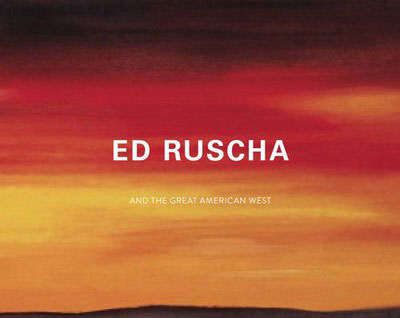
Beginning in 1956, road trips across the American Southwest furnished a conceptual trove of themes and motifs that the artist Ed Ruscha mined throughout his career. The everyday landscapes of the West, especially as experienced from the automobile—gas stations, billboards, building facades, parking lots, and long stretches of roadway—are the primary motifs of his often deadpan and instantly recognizable paintings and works on paper, as well as his influential artist books.
Ruscha’s interest in what the real West has become—and Hollywood’s version of it—plays out across his oeuvre. The cinematic sources of his subject matter can be seen in his silhouette pictures, which often appear to be grainy stills from old Hollywood movies. Featuring essays by Karin Breuer and D.J. Waldie, plus an interview with the artist conducted by Kerry Brougher, this catalogue, produced in close collaboration with the Ruscha studio, offers the first full exploration of the painter’s lifelong fascination with the romantic concept and modern reality of the evolving American West. Published in association with the Fine Arts Museums of San Francisco.
BASIC FACTS: “Ed Ruscha and the Great American West” is written by Karin Breuer (Editor), D.J Waldie (Contributor) and Ed Ruscha (Contributor). Published by University of California Press. Release Date: July 12, 2016. Hardcover; 256 pages; $55.00.
“diane arbus: in the beginning”
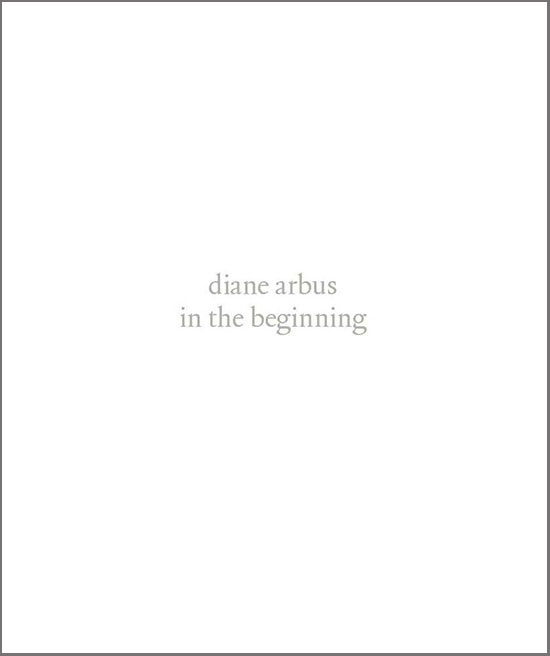
Diane Arbus (1923–1971) is one of the most distinctive and provocative artists of the twentieth century. Her photographs of children and eccentrics, couples and circus performers, female impersonators and nudists are among the most recognizable images of our time. This book is the definitive study of the artist’s first seven years of work, from 1956 to 1962. The contents are drawn primarily from the holdings of the Metropolitan Museum’s Diane Arbus Archive—a treasury of photographs, negatives, appointment books, notebooks, and correspondence.
“diane arbus: in the beginning” showcases over 100 of the artist’s early photographs, more than half of which are published here for the first time. The book provides an in-depth presentation of the artist’s genesis, showing Arbus as she developed her evocative and often haunting imagery. This catalog accompanies The Metropolitan Museum of Art Department of Photographs exhibition at The Met Breuer, “diane arbus: in the beginning” opening on July 12, 2016.
BASIC FACTS: “diane arbus: in the beginning” is written by Jeff L. Rosenheim. Published by Metropolitan Museum of Art. Release Date: July 12, 2016. Hardcover; 256 pages, $50.00.
“America after the Fall: Painting in the 1930s”

Through 50 masterpieces of painting, this catalogue chronicles the turbulent economic, political, and aesthetic climate of the 1930s. This decade was a creative period in the United States, as the nation’s artists, novelists, and critics struggled through the Great Depression seeking to define modern American art. In the process, many painters challenged and reworked the meanings and forms of modernism, reaching no simple consensus. This period was also marked by diversity of work as artists sought styles—ranging from abstraction to Regionalism to Surrealism—that allowed them to engage with issues such as populism, labor, social protest, and to employ an urban and rural iconography including machines, factories, and farms.
Works by Edward Hopper, Grant Wood, Thomas Hart Benton, Georgia O’Keeffe, Aaron Douglas, Charles Sheeler, Stuart Davis, and others show such attempts to capture the American character. These paintings, highlight the relationship between art and national experience and demonstrate how creativity, experimentation, and revolutionary vision flourished during a time of great uncertainty.
BASIC FACTS: “America after the Fall: Painting in the 1930s” is written by Judith A. Barter. Published by Art Institute of Chicago. Release Date: July 19, 2016. Hardcover; 204 pages; $50.00.
“Please Touch: Sculpture for a City”
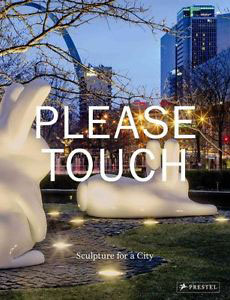
This visual tour of St. Louis, MO’s Citygarden―one of America’s renowned sculpture gardens―is an introduction to the world of public art. In 2009 the city of St. Louis, MO, under the direction of the Gateway Foundation, converted two vacant parcels of land into a world-class sculpture park, housing works by revered artists such as Keith Haring, Erwin Wurm, and Niki de Saint Phalle.
The park, which attracts nearly one million visitors a year, is open 24-hours a day and allows the public to touch and even climb on the works. Many of the park’s pieces are profiled, as are sculptures that have been installed in other locations throughout St. Louis. Essays exploring the history of the benefits of public art and the transformative force of the nonprofit Gateway Foundation make this volume an important contribution to the study of public art.
BASIC FACTS: “Please Touch: Sculpture for a City” is written by Warren Byrd (Contributor), Robert Duffy (Contributor), Paul Ha (Contributor), Peter MacKeith (Contributor) and Patricia C. Phillips (Contributor). Published by Prestel. Release Date: July 25, 2016. Hardcover; 184 pages; $60.00.
“Alex Katz: 45 Years of Portraits 1969-2016”
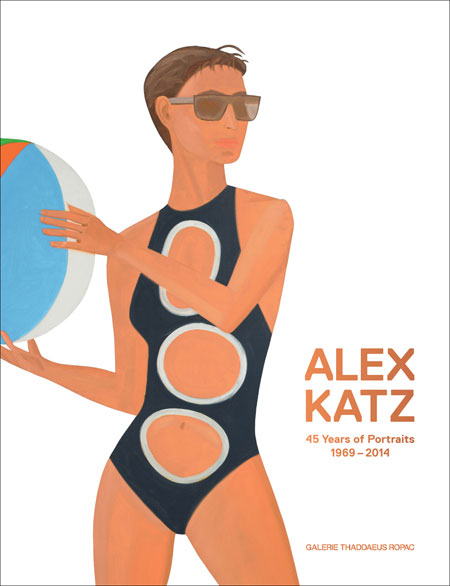
“Alex Katz: 45 Years of Portraits 1969–2014” explores the ongoing importance of the figure in the artistic output of Alex Katz (born 1927). This volume collects some 100 works, from classic paintings of the 1960s and 1970s to more recent work ranging stylistically from large-scale works to intimate and cursory sketches and Katz’s relatively lesser-known and less-exhibited “cutouts,” which have the appearance of autonomous silhouettes detached and floating in the exhibition space.
In juxtaposing works from different styles and periods in his creative life, this series gives rise to an often overlooked narrative dimension in Katz’s oeuvre. Alongside these figural works, the catalogue features original essays by writer and art historian Adrien Goetz―who examines Katz’s work in light of pieces by Dominique Ingres, Edouard Manet and Edgar Degas―and fashion journalist Suzy Menkes, who considers Katz in the context of style and fashion.
BASIC FACTS: “Alex Katz: 45 Years of Portraits 1969-2016” is written by Adrien Goetz. Published by Galerie Thaddaeus Ropac, Paris/Salzburg. Release Date: July 26, 2016. Hardcover; 136 pages.
“Eye Attack: Op Art and Kinetic Art 1950-1970”
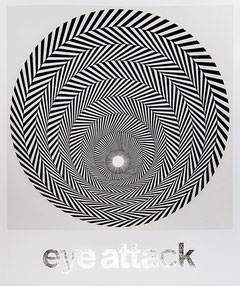
Op art had its inception in the middle of the 1950s and its glory days in the 1960s, when it established itself internationally across political and cultural contexts. These artists―among them Victor Vasarely and Bridget Riley―were preoccupied with science, the psychology of perception and the new technology of the time. This dynamic approach to the world is also the essence of kinetic art, which broadly describes works of art that incorporate movement, whether literally or as an illusion. Optical and kinetic art developed hand in hand, in an abstract, geometrical language of form, using new industrial materials and techniques, and share a strong interest for the anti-static and the direct sensory experience.
These movements have left their marks upon contemporary visual art and culture. The direct appeal to the senses is unabated, the movement’s place in (pre-digital) cultural history, its heritage in contemporary art and the appeal it still holds is discussed in essays by Tine Colstrup, Matthieu Poirier and Joe Houston. Michael Juul Holm interviews artists Carlos Cruz-Diez, Francois Morellet and Heinz Mack, as well as younger artists John Armleder, Olafur Eliasson and Julie Riis Andersen, all of whom share a kinship with historical Op art.
BASIC FACTS: “Eye Attack: Op Art and Kinetic Art 1950-1970” is written by Lærke Jørgensen (Editor), Michael Holm (Editor), Tine Colstrup (Editor) and Kristen Degel (Editor). Published by Louisiana Museum of Modern Art. Release Date: July 26, 2016. Hardcover; $35.00.
“June Leaf: Thought Is Infinite”
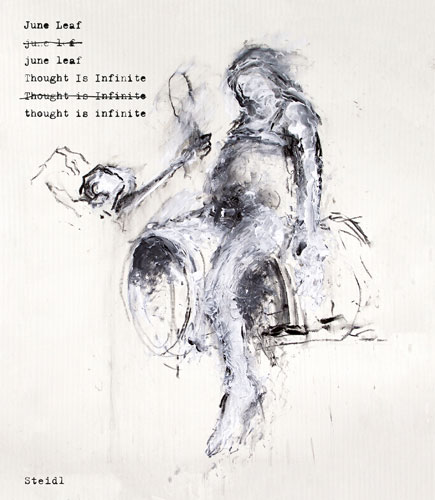
June Leaf’s body of work―one built over nearly seven decades―belongs within a long tradition of visionary figures, from William Blake and Francisco Goya to James Ensor and Odilon Redon. Like these innovative predecessors, incorporating elements of both Expressionism and Surrealism, Leaf infuses representational imagery with an intense subjectivity and personal symbolist vision. She does so through an approach to and facility with materials, often combining mediums and matter in unorthodox ways.
Leaf’s exhibition at the Whitney Museum and this accompanying comprehensive publication include drawings from every decade of her career, as well as a selection of sculptures and paintings, in order to elucidate the migration and cross-referencing of motifs and techniques from one medium to the other. In an immersive installation, the viewer perceives how the artist’s studio space intersects with her extraordinarily rich imagination and deeply personal, invented world in which fiction and reality indistinguishably merge. “June Leaf: Thought Is Infinite” remains on view through July 17, 2016 at the Whitney Museum in NYC.
BASIC FACTS: “June Leaf: Thought Is Infinite” is written by Alice Attie (Photographer), June Leaf (Artist), Carter Foster (Contributor) and Clara Rojass-Sebesta (Contributor). Published by Steidl/Whitney Museum of American Art. Release Date: July 26, 2016. Hardcover; 280 pages; $40.00.
“Samara Golden: The Flat Side of the Knife”
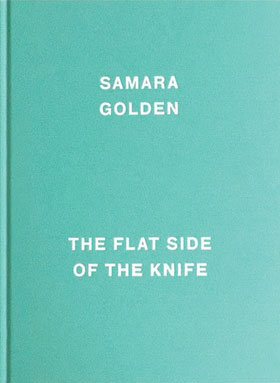
Los Angeles–based artist Samara Golden (born 1973) creates immersive installations that explore what she calls the sixth dimension, where a multitude of pasts, presents and futures exist concurrently. For “The Flat Side of the Knife,” curated by Mia Locks and organized by MoMA PS1, Golden presented her largest installation to date, filling the double height of MoMA PS1’s Duplex Gallery with staircases, beds, couches, lamps, musical instruments, video and sound.
“The Flat Side of the Knife” combines physical spaces with illusory spaces that appear only in mirrors, akin to psychological and hallucinatory spaces in the mind. Her use of mirrors in conjunction with sculptural elements made from a silvery insulation board allows the illusion of space to expand in multiple directions. This catalogue includes documentation of this exhibition alongside the artist’s other major works to date.
BASIC FACTS: “Samara Golden: The Flat Side of the Knife” is written by Mia Locks (Editor), Samara Golden (Artist), Klaus Bisenbach (Foreword) and Sarah Lehrer-Graiwer (Contributor). Published by MoMA PS1. Release Date: July 26, 2016. Hardcover; 88 pages; $40.00.
_______________________________
Copyright 2016 Hamptons Art Hub LLC. All rights reserved.
